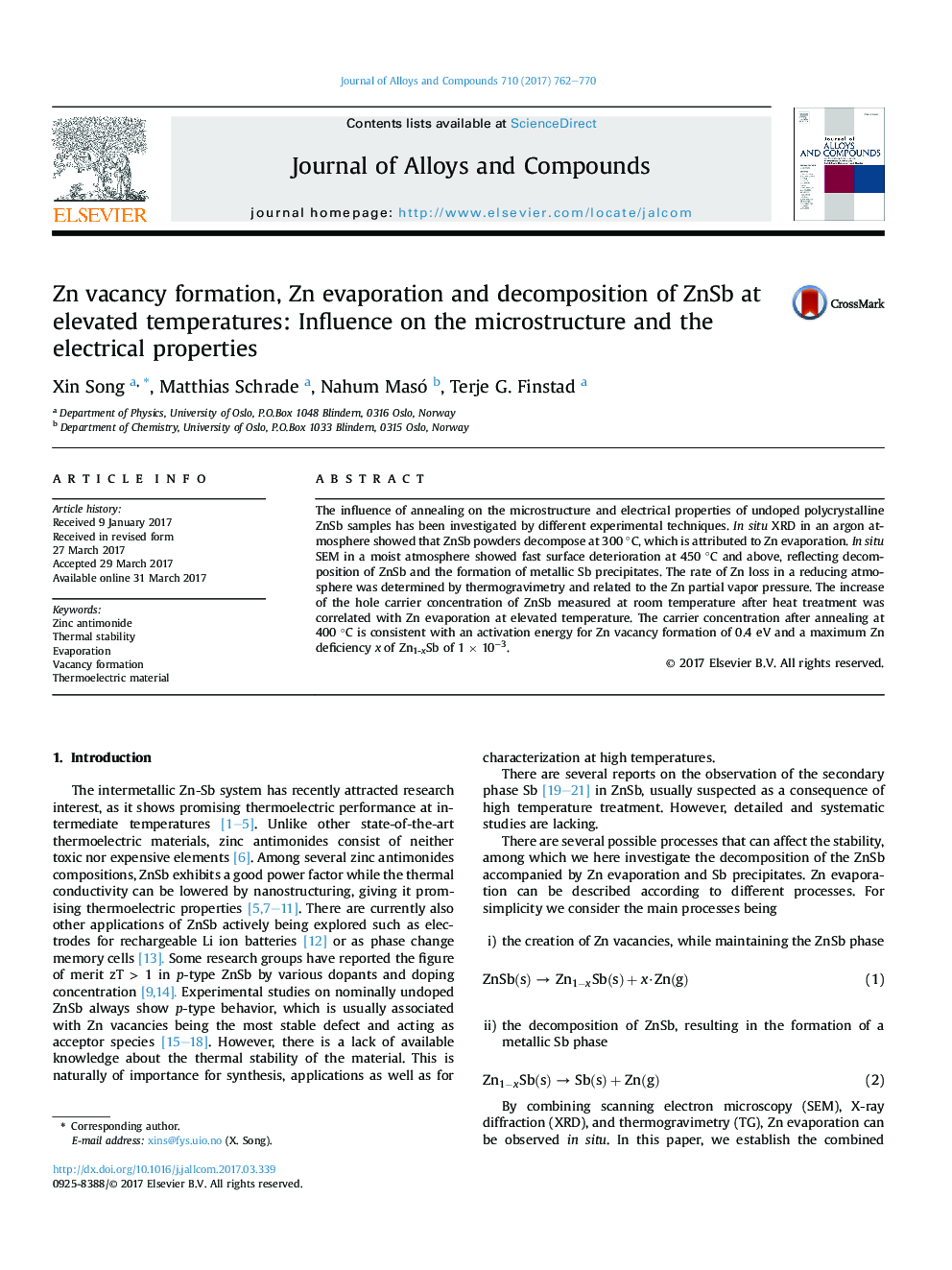| Article ID | Journal | Published Year | Pages | File Type |
|---|---|---|---|---|
| 5461169 | Journal of Alloys and Compounds | 2017 | 9 Pages |
Abstract
The influence of annealing on the microstructure and electrical properties of undoped polycrystalline ZnSb samples has been investigated by different experimental techniques. In situ XRD in an argon atmosphere showed that ZnSb powders decompose at 300 °C, which is attributed to Zn evaporation. In situ SEM in a moist atmosphere showed fast surface deterioration at 450 °C and above, reflecting decomposition of ZnSb and the formation of metallic Sb precipitates. The rate of Zn loss in a reducing atmosphere was determined by thermogravimetry and related to the Zn partial vapor pressure. The increase of the hole carrier concentration of ZnSb measured at room temperature after heat treatment was correlated with Zn evaporation at elevated temperature. The carrier concentration after annealing at 400 °C is consistent with an activation energy for Zn vacancy formation of 0.4 eV and a maximum Zn deficiency x of Zn1-xSb of 1 Ã 10â3.
Related Topics
Physical Sciences and Engineering
Materials Science
Metals and Alloys
Authors
Xin Song, Matthias Schrade, Nahum Masó, Terje G. Finstad,
